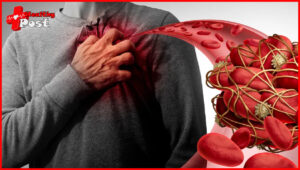
Angioplasty is the most typical treatment for arteriosclerosis.
Arteriosclerosis, a hardening and narrowing of the arteries, remains one of the top causes of heart attacks and strokes worldwide. It’s a silent threat that can develop over years without showing symptoms. When it gets bad enough, blood flow to vital organs can be blocked, leading to serious health problems. Angioplasty is the most typical treatment for arteriosclerosis.
Luckily, doctors have effective ways to treat this condition. Among them, angioplasty stands out as the most common approach. This minimally invasive procedure helps open blocked arteries and restore blood flow, reducing the risk of deadly events.
Understanding Arteriosclerosis and Its Impact on Health
What is Arteriosclerosis?
Arteriosclerosis is a condition where arteries get thick and stiff. Sometimes, it’s called atherosclerosis, which means buildup of plaque inside the arteries. This plaque is made of fat, cholesterol, and other substances.
Risk factors include aging, an unhealthy diet, lack of exercise, smoking, and genetics. People with high blood pressure or diabetes also face higher chances of developing this disease.
It’s widespread. Nearly half of adults in many countries have some form of arteriosclerosis. This makes it a major concern for public health and a leading cause of death.
How Arteriosclerosis Affects the Cardiovascular System
As plaque builds up, the arteries become narrower. This limits blood flow to the heart, brain, and other organs. Without enough oxygen-rich blood, tissues can get damaged or die.
If a plaque cracks or blood clots form, it can cause a heart attack or stroke. In the legs, it can cause pain and weakness, known as peripheral artery disease. That’s why early treatment matters so much.
Symptoms and Diagnosis of Arteriosclerosis
Many people don’t notice symptoms until the disease is advance. Some common signs are chest pain, leg cramps, or feeling unusually tired.
Doctors use tests like angiography, ultrasound, CT scans, and blood work to find blockages. Catching arteriosclerosis early can save lives and make treatment easier.

Angioplasty the Most Common Treatment for Arteriosclerosis
What is Angioplasty?
Angioplasty is a procedure that helps open blocked arteries. It’s often done with tiny tools inserted through small cuts in the skin.
There are different types—balloon angioplasty, where a small balloon inflates to push plaque aside, and stent placement, which involves putting a metal mesh to keep the artery open. Some stents release medication to prevent re-blockage.
Unlike open-heart surgery, angioplasty is less invasive and usually takes less time to recover from.
The Procedure: Step-by-Step Process
Before a procedure, your doctor checks your overall health. Usually, you’re given medicines to prevent blood clots.
During angioplasty, a catheter with a tiny balloon is threaded through a blood vessel to the blocked artery. The balloon inflates, pressing plaque against the artery walls. In many cases, a stent stays in place to help keep the artery open.
Once the process is done, doctors remove the catheter and you’ll stay under observation for a few hours. Recovery typically involves minimal time and quick return to daily activities.
Benefits and Effectiveness of Angioplasty
Clinical trials show high success rates for angioplasty in relieving symptoms and improving blood flow. Many patients report less chest pain and breathless episodes after the procedure.
Because it’s minimally invasive, patients often go home the same day or within a day. Recovery is faster than open-heart surgery, and the risk of complications is lower.
Risks and Limitations
While generally safe, angioplasty can carry risks. These include re-narrowing of the artery, blood clots, or allergic reactions to dye or medications.
Sometimes, the procedure isn’t suitable, especially if arteries are severely diseased or heavily calcified. Post-procedure, lifestyle changes and medications are crucial to keep arteries open.
Advances and Innovations in Angioplasty
Technological Improvements
Newer stents, like drug-eluting ones, slowly release medicines that prevent re-blockage. Bioresorbable scaffolds are another innovation—they dissolve over time, leaving no permanent metal behind.
Advanced imaging methods help doctors see exactly where blockages are and place stents more accurately. This reduces risks and improves outcomes.
Future Directions in Treatment
Researchers are exploring combining angioplasty with gene or cell therapy. The goal is to not only open arteries but also repair damaged blood vessels. Personalized medicine might help tailor treatments to each patient’s unique risk factors.
Clinical trials are ongoing, and early results show promise for even better results in the future.
Lifestyle Changes and Preventive Measures
Post-Angioplasty Lifestyle Recommendations
After angioplasty, maintaining a healthy lifestyle is essential. Eating a diet low in saturated fat and high in fruits and vegetables can help. Regular exercise, like walking or cycling, improves heart health.
Quitting smoking and managing stress reduce the chance of future blockages. Small daily changes can make a big difference.
Medications and Monitoring
Many patients take medications to prevent blood clots and lower cholesterol. Common drugs include antiplatelets and statins.
Regular check-ups and imaging tests are vital. They help catch any signs of re-narrowing early and prevent complications. Paying attention to warning signs like chest pain or leg weakness is equally important.
Conclusion
Angioplasty has transformed how we treat arteriosclerosis. It’s effective, safe, and offers quick relief from symptoms. But it’s just part of a broader approach. Healthy living, medications, and ongoing follow-up are essential to prevent future issues.
If you or someone you know has signs of artery blockage, consult a healthcare professional. A personalized treatment plan and lifestyle changes can keep your arteries healthy and your heart strong.


2 thoughts on “Angioplasty is the most typical treatment for arteriosclerosis.”